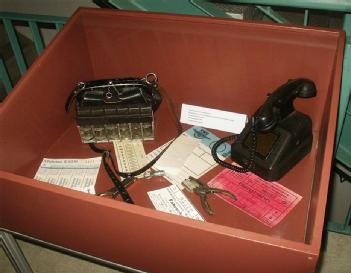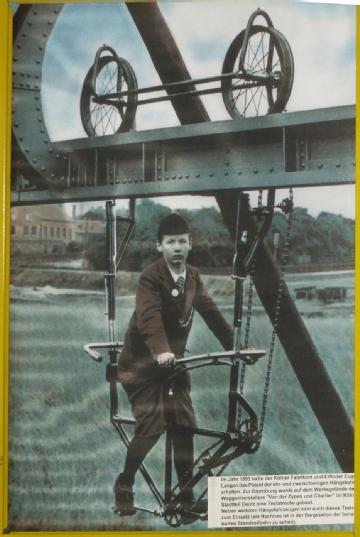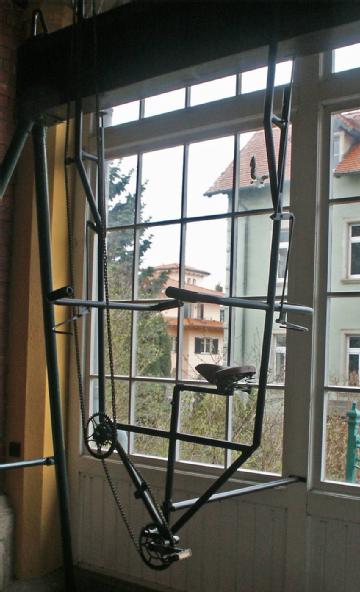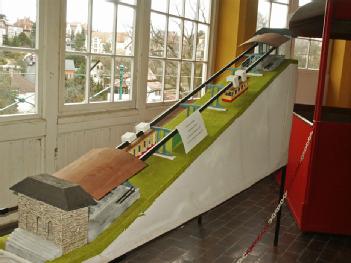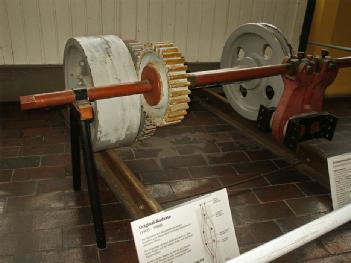
Ausstellung der Dresdner Bergbahnen |
01326 Dresden, Germany (Sachsen) |
|
| Address |
Pillnitzer Landstraße 5
|
| Floor area | 250 m² / 2 691 ft² |
Museum typ
Exhibition
Mountain Railways & Cableways
- Combustion engines/generators/pumps
- Electric motors/generators/pumps
- Telephone / Telex
- Electrical Applications
|
Opening times
|
täglich während der Betriebszeiten der Schwebebahn
|
||||||||
|
Status from 01/2014
|
Fahrpreise siehe DVB Webpage; Eintritt in die Ausstellung ist frei; Eintritt zur Technik: 2,50 € |
||||||||
| Contact |
|
||||||||
| Homepage | www.dvb.de/de/Freizeit-Tourismus/Bergbahnen | ||||||||
Our page for Ausstellung der Dresdner Bergbahnen in Dresden, Germany, is not yet administrated by a Radiomuseum.org member. Please write to us about your experience with this museum, for corrections of our data or sending photos by using the Contact Form to the Museum Finder.
| Location / Directions |
The lower stations of the funicular railway and the suspension railway are both right by Körnerplatz. Bus routes 61, 63 and 84 stop at Körnerplatz, or you can take trams 6 or 12 to the Schillerplatz stop. From there it is just a short walk across the famous 'Blue Wonder' bridge to Körnerplatz. |
| Description | Cable CarsThe suspension railway and funicular railway have helped define the landscape on the picturesque slopes of the Elbe at Loschwitz for more than 100 years. As well as being used for public transport, the two railways have become established as an important Dresden tourist attraction. The funicular railway – a track-running cable railway – runs from Körnerplatz to the district of Weißer Hirsch, a well-known exclusive residential area in Dresden. The lower station of the suspension railway is just around the corner from Körnerplatz and goes to Oberloschwitz.Travelling on the cable cars in Dresden is a special experience, not just because of their unique charm. The upper station of the suspension railway offers visitors a lovely view of the Elbe valley and, for technology enthusiasts, interesting exhibitions on how the railways are operated. Tour and exhibitionAt weekends and on public holidays, anyone who is interested can find out from our experts how the funicular railway is powered, and how it was historically supplied with energy. If you would like to visit the machine rooms please book in advance.In the upper station of the suspension railway a small exhibition reveals the engineering and history behind this technologically unique monument. There are daily tours of the drive mechanism in the suspension railway machine room. For large groups we also recommend booking in advance. Funicular RailwayDresden’s funicular railway has been taking passengers from the district of Loschwitz up to that of Weißer Hirsch since 1895. At first the route was intended only to connect the city centre with the newly founded residential area Weißer Hirsch. Following the construction of a sanatorium, the district had become renowned for its spas. Today, the funicular railway has become an important tourist attraction in Dresden. The railway itself, which has been listed as a historical monument since 1984, is certainly worth a visit.Suspension RailwayIn 1901, six years after the nearby funicular railway came into operation, the Dresden suspension railway started up. This cable-drawn railway has connected the district of Loschwitz with the heights of Oberloschwitz ever since. The suspension railway itself is a marvellous example of German construction skill. The oldest suspension cable railway and unique in its design, it has defied time and withstood the ups and downs of history, with only minor technological changes required during that time. The suspension railway has been listed as a historical monument since 1975.After extensive reconstruction from 2001–2002, the upper station of the suspension railway was equipped with a modern panoramic lift to take visitors to the machine room tower and its impressive viewing platform. The view over the entire Dresden Elbe Valley gave the area its local name: “Schöne Aussicht” – “Lovely View”. The suspension railway's technology is based on the single-track suspension railway principle, the brainchild of the Cologne engineer Eugen Langen. The suspension unit to which the track is attached is held up by 32 pin-ended members and one fixed support. Both carriages have wheels with double wheel flanges to guide them along the track. The carriages themselves hang down below the rail and the train is pulled along by a cable. The hoisting engine is in the upper station. It was initially run by a compound steam engine, but since 1909 a direct-current engine has been used to send the train trundling back and forth between the lower and upper stations of this rail system, which is one of a kind in the world. |
Radiomuseum.org presents here one of the many museum pages. We try to bring data for your direct information about all that is relevant. In the list (link above right) you find the complete listing of museums related to "Radio & Co." we have information of. Please help us to be complete and up to date by using the contact form above.
[dsp_museum_detail.cfm]
| Data Compliance | More Information |

 dvbag.de
dvbag.de 













